
32 Examples of Real-World Math Problems

- • Published: April 23, 2024
- • Last update: October 31, 2024
- • Grades: All grades
Introduction

8th grade algebra problem:
Farmer Alfred has three times as many chickens as cows. In total, there are 60 legs in the barn. How many cows does Farmer Alfred have? [1]
Does this sound like a real-world math problem to you? We’ve got chickens, cows, and Farmer Alfred – it’s a scenario straight out of everyday life, isn’t it?
But before you answer, let me ask you something: If you wanted to figure out the number of cows, would you:
- Count their legs, or
- Simply count their heads ( or even just ask Farmer Alfred, “Hey Alfred, how many cows do you have?” )
Chances are, most people would go with option B.
So, why do our math books contain so many “real-world math problems” like the one above?
In this article, we’ll dive into what truly makes a math problem a real-world challenge.
Understanding 'Problems' in Daily Life and Mathematics
The word “problem” carries different meanings in everyday life and in the realm of mathematics, which can sometimes lead to confusion. In our daily lives, when we say “ I have a problem ,” we typically mean that something undesirable has occurred – something challenging to resolve or with potential negative consequences.
For instance:
- “I have a problem because I’ve lost my wallet.”
- “I have a problem because I forgot my keys at home, and I won’t be able to get into the house when I return from school.”
- “I have a problem because I was sick and missed a few weeks of school, which means I’ll likely fail my math test.”
These are examples of everyday problems we encounter. However, once the problem is solved, it often ceases to be a problem:
- “I don’t have a problem getting into my house anymore because my mom gave me her keys.”
In mathematics, the term “problem” takes on a different meaning. According to the Cambridge dictionary [2], it’s defined as “ a question in mathematics that needs an answer. “
Here are a few examples:
- If x + 2 = 4, what is the value of x?
- How do you find the common denominator for fractions 1/3 and 1/4?
- What is the length of the hypotenuse in a right triangle if two legs are 3 and 4 feet long?
These are all examples of math problems.
It’s important to note that in mathematics, a problem remains a problem even after it’s solved. Math problems are universal, regardless of who encounters them [3]. For instance, both John and Emma could face the same math problem, such as “ If x + 2 = 4, then what is x? ” After they solve it, it still remains a math problem that a teacher could give to somebody else.
Understanding Real-World Math Problems
So, what exactly is a “real-world math problem”? We’ve established that in our daily lives, we refer to a situation as a “problem” when it could lead to unpleasant consequences. In mathematics, a “problem” refers to a mathematical question that requires a mathematical solution.
With that in mind, we can define a real-world math problem as:
A situation that could have negative consequences in real life and that requires a mathematical solution (i.e. mathematical solution is preferred over other solutions).
Consider this example:

Could miscalculating the flour amount lead to less-than-ideal results? Absolutely. Messing up the flour proportion could result in a less tasty cake – certainly an unpleasant consequence.
Now, let’s explore the methods for solving this. While traditional methods, like visually dividing the flour or measuring multiple times, have their place, they may not be suitable for larger-scale events, such as catering for a wedding with 250 guests. In such cases, a mathematical solution is not only preferred but also more practical.
By setting up a simple proportion – 1 1/2 cups of flour for 8 people equals x cups for 20 people – we can quickly find the precise amount needed: 3 3/4 cups of flour. In larger events, like the wedding, the mathematical approach provides even more value, yielding a requirement of nearly 47 cups of flour.
This illustrates why a mathematical solution is faster, more accurate, and less error-prone, making it the preferred method. Coupled with the potential negative consequences of inaccuracies, this makes the problem a real-world one, showcasing the practical application of math in everyday scenarios.
Identifying Non-Real-World Math Problems
Let’s revisit the example from the beginning of this article:
Farmer Alfred has three times as many chickens as cows. In total, there are 60 legs in the barn. How many cows does Farmer Alfred have?
3rd grade basic arithmetic problem:
Noah has $56, and Olivia has 8 times less. How much money does Olivia have?

Once more, in our daily routines, do we handle money calculations this way? Why would one prefer to use mathematical solution ($56 : 8 =$7). More often than not, we’d simply ask Olivia how much money she has. While the problem can theoretically be solved mathematically, it’s much more practical, efficient, and reliable to resolve it by directly asking Olivia.
Examples like these are frequently found in math textbooks because they aid in developing mathematical thinking. However, the scenarios they describe are uncommon in real life and fail to explicitly demonstrate the usefulness of math. In essence, they don’t showcase what math can actually be used for. Therefore, there are two crucial aspects of true real-world math problems: they must be commonplace in real life, and they must explicitly illustrate the utility of math.
To summarize:
Word problems that are uncommon in real life and fail to convincingly demonstrate the usefulness of math are not real-world math problems.
Real-World Math Problems Across Professions
Many professions entail encountering real-world math problems on a regular basis. Consider the following examples:

Nurses often need to calculate accurate drug dosage amounts using proportions, a task solved through mathematical methods. Incorrect dosage calculations can pose serious risks to patient health, leading to potentially harmful consequences.
Construction engineers frequently need to determine whether a foundation will be sturdy enough to support a building, employing mathematical solving techniques and specialized formulas. Errors in these calculations can result in structural issues such as cracks in walls due to foundation deformation, leading to undesirable outcomes.

Marketers often rely on statistical analysis to assess the performance of online advertisements, including metrics like click-through rates and the geographical distribution of website visitors. Mathematical analysis guides decision-making in this area. Inaccurate analyses may lead to inefficient allocation of advertisement budgets, resulting in less-than-optimal outcomes.
These examples illustrate real-world math problems encountered in various professions. While there are numerous instances of such problems, they are often overlooked in educational settings. At DARTEF, we aim to bridge this gap by compiling a comprehensive list of real-world math problems, which we’ll explore in the following section.
32 Genuine Real-World Math Problems
In this section, we present 32 authentic real-world math problems from diverse fields such as safety and security, microbiology, architecture, engineering, nanotechnology, archaeology, creativity, and more. Each of these problems meets the criteria we’ve outlined previously. Specifically, a problem can be classified as a real-world math problem if:
- It is commonly encountered in real-life scenarios.
- It has the potential for undesirable consequences.
- A mathematical solution is preferable over alternative methods.
- It effectively illustrates the practical utility of mathematics.
All these problems stem from actual on-the-job situations, showcasing the application of middle and high school math in various professions.
Math Problems in Biology
Real-world math problems in biology often involve performing measurements or making predictions. Mathematics helps us understand various biological phenomena, such as the growth of bacterial populations, the spread of diseases, and even the reconstruction of ancient human appearances. Here are a couple of specific examples:
1. Reconstructing Human Faces Using Parallel and Perpendicular Lines:

Archeologists and forensic specialists often reconstruct human faces based on skeletal remains. They utilize parallel and perpendicular lines to create symmetry lines on the face, aiding in the recovery of facial features and proportions. Our article, “ Parallel and Perpendicular Lines: A Real-Life Example (From Forensics and Archaeology) ,” provides a comprehensive explanation and illustrates how the shape of the nose can be reconstructed using parallel and perpendicular lines, line segments, tangent lines, and symmetry lines.
2. Measuring Bacteria Size Using Circumference and Area Formulas:

Microbiology specialists routinely measure bacteria size to monitor and document their growth rates. Since bacterial shapes often resemble geometric shapes studied in school, mathematical methods such as calculating circumference or area of a circle are convenient for measuring bacteria size. Our article, “ Circumference: A Real-Life Example (from Microbiology) ,” delves into this process in detail.
Math Problems in Construction and Architecture
Real-world math problems are abundant in architecture and construction projects, where mathematics plays a crucial role in ensuring safety, efficiency, and sustainability. Here are some specific case studies that illustrate the application of math in these domains:
3. Calculating Central Angles for Safe Roadways:

Central angle calculations are a fundamental aspect of roadway engineering, particularly in designing curved roads. Civil engineers use these calculations to determine the degree of road curvature, which significantly impacts road safety and compliance with regulations. Mathematical concepts such as radius, degrees, arc length, and proportions are commonly employed by civil engineers in their daily tasks. Our article, “ How to Find a Central Angle: A Real-Life Example (from Civil Engineering) ,” provides further explanation and demonstrates the calculation of central angles using a real road segment as an example.
4. Designing Efficient Roof Overhang Using Trigonometry

Trigonometry is a powerful tool in architecture and construction, providing a simple yet effective way to calculate the sizes of building elements, including roof overhangs. For example, the tangent function is used to design the optimal length of a roof overhang that blocks the high summer sun while allowing the lower winter sun to enter . Our article, “ Tangent (Trigonometry): A Real-Life Example (From Architecture and Construction) ,” provides a detailed use case with two methods of calculation and also includes a worksheet.
5. Designing Efficient Roofs for Solar Panels Using Angle Geometry:

Mathematics plays a crucial role in architecture, aiding architects and construction engineers in designing energy-efficient building structures. For example, when considering the installation of solar panels on a building’s roof, understanding geometric properties such as adjacent and alternate angles is essential for maximizing energy efficiency . By utilizing mathematical calculations, architects can determine the optimal angle for positioning solar panels and reflectors to capture maximum sunlight. Our article, “ A Real-Life Example of How Angles are Used in Architecture ,” provides explanations and illustrations, including animations.
6. Precision Drilling of Oil Wells Using Trigonometry:

Petroleum engineers rely on trigonometric principles such as sines, cosines, tangents, and right-angle triangles to drill oil wells accurately. Trigonometry enables engineers to calculate precise angles and distances necessary for drilling vertical, inclined, and even horizontal wells. For instance, when drilling at an inclination of 30°, engineers can use trigonometry to calculate the vertical depth corresponding to each foot drilled horizontally. Our article, “ CosX: A Real-Life Example (from Petroleum Engineering) ,” provides examples, drawings of right triangle models, and necessary calculations.
7. Calculating Water Flow Rate Using Composite Figures:
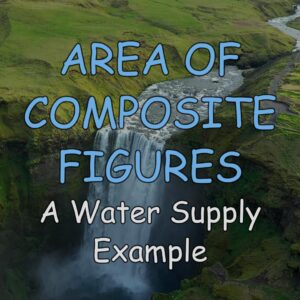
Water supply specialists frequently encounter the task of calculating water flow rates in water canals, which involves determining the area of composite figures representing canal cross-sections . Many canal cross-sections consist of composite shapes, such as rectangles and triangles. By calculating the areas of these individual components and summing them, specialists can determine the total cross-sectional area and subsequently calculate the flow rate of water. Our article, “ Area of Composite Figures: A Real-Life Example (from Water Supply) ,” presents necessary figures, cross-sections, and an example calculation.
Math Problems in Business and Marketing
Mathematics plays a crucial role not only in finance and banking but also in making informed decisions across various aspects of business development, marketing analysis, growth strategies, and more. Here are some real-world math problems commonly encountered in business and marketing:
8. Analyzing Webpage Position in Google Using Polynomials and Polynomial Graphs:

Polynomials and polynomial graphs are essential tools for data analysis. They are useful for a wide variety of people, not only data analysts, but literally everyone who ever uses Excel or Google Sheets. Our article, “ Graphing Polynomials: A Real-World Example (from Data Analysis) ,” describes this and provides an authentic case study. The case study demonstrates how polynomials, polynomial functions of varying degrees, and polynomial graphs are used in internet technologies to analyze the visibility of webpages in Google and other search engines.”
9. Making Informed Business Development Decisions Using Percentages:

In business development, math problems often revolve around analyzing growth and making strategic decisions. Understanding percentages is essential, particularly when launching new products or services. For example, determining whether a startup should target desktop computer, smartphone, or tablet users for an app requires analyzing installation percentages among user groups to gain insights into consumer behavior. Math helps optimize marketing efforts, enhance customer engagement, and drive growth in competitive markets. Check out our article “ A Real-Life Example of Percent Problems in Business ” for a detailed description of this example.
10. Analyzing Customer Preferences Using Polynomials:

Marketing involves not only creative advertising but also thorough analysis of customer preferences and marketing campaigns. Marketing specialists often use simple polynomials for such analysis, as they help analyze multiple aspects of customer behavior simultaneously. For instance, marketers may use polynomials to determine whether low price or service quality is more important to hotel visitors. Smart analysis using polynomials enables businesses to make informed decisions. If you’re interested in learning more, our article “ Polynomials: A Real Life Example (from Marketing) ” provides a real-world example from the hotel industry.
11. Avoiding Statistical Mistakes Using Simpson’s Paradox:
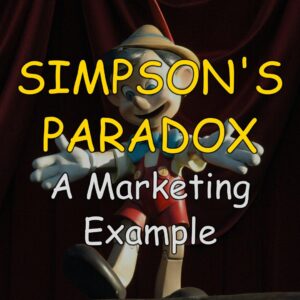
Data gathering and trend analysis are essential in marketing, but a good understanding of mathematical statistics helps avoid intuitive mistakes . For example, consider an advertising campaign targeting Android and iOS users. Initial data may suggest that iOS users are more responsive. However, a careful statistical analysis, as described in our article “ Simpson’s Paradox: A Real-Life Example (from Marketing) ,” may reveal that Android users, particularly tablet users, actually click on ads more frequently. This contradiction highlights the importance of accurate statistical interpretation and the careful use of mathematics in decision-making.
Math Problems in Digital Agriculture
In the modern era, agriculture is becoming increasingly digitalized, with sensors and artificial intelligence playing vital roles in farm management. Mathematics is integral to this digital transformation, aiding in data analysis, weather prediction, soil parameter measurement, irrigation scheduling, and more. Here’s an example of a real-world math problem in digital agriculture:
12. Combatting Pests with Negative Numbers:

Negative numbers are utilized in agriculture to determine the direction of movement, similar to how they’re used on a temperature scale where a plus sign indicates an increase and a minus sign indicates a decrease. In agricultural sensors, plus and minus signs may indicate whether pests are moving towards or away from plants. For instance, a plus sign could signify movement towards plants, while a minus sign indicates movement away from plants. Understanding these directional movements helps farmers combat pests effectively. Our article, “ Negative Numbers: A Real-Life Example (from Agriculture) ,” provides detailed explanations and examples of how negative numbers are applied in agriculture.
Math Problems in DIY Projects
In do-it-yourself (DIY) projects, mathematics plays a crucial role in measurements, calculations, and problem-solving. Whether you’re designing furniture, planning home renovations, crafting handmade gifts, or landscaping your garden, math provides essential tools for precise measurements, material estimations, and budget management. Here’s an example of a real-world math problem in DIY:
13. Checking Construction Parts for Right Angles Using the Pythagorean Theorem:

The converse of the Pythagorean theorem allows you to check whether various elements – such as foundations, corners of rooms, garage walls, or sides of vegetable patches – form right angles. This can be done quickly using Pythagorean triples like 3-4-5 or 6-8-10, or by calculating with square roots. This method ensures the creation of right angles or verifies if an angle is indeed right. Our article, “ Pythagorean Theorem Converse: A Real-Life Example (from DIY) ,” explains this concept and provides an example of how to build a perfect 90° foundation using the converse of the Pythagorean theorem.
Math Problems in Entertainment and Creativity
Mathematics plays a surprisingly significant role in the creative industries, including music composition, visual effects creation, and computer graphic design. Understanding and applying mathematical concepts is essential for producing engaging and attractive creative works. Here’s an example of a real-world math problem in entertainment:
14. Controlling Stage Lamps with Linear Functions:

Linear and quadratic functions are essential components of the daily work of lighting specialists in theaters and event productions. These professionals utilize specialized software and controllers that rely on algorithms based on mathematical functions. Linear functions, in particular, are commonly used to control stage lamps, ensuring precise and coordinated lighting effects during performances. Our article, “ Linear Function: A Real-Life Example (from Entertainment) ,” delves into this topic in detail, complete with animations that illustrate how these functions are applied in practice.
Math Problems in Healthcare
Mathematics plays a crucial role in solving numerous real-world problems in healthcare, ranging from patient care to the design of advanced medical devices. Here are several examples of real-world math problems in healthcare:
15. Calculating Dosage by Converting Time Units:

Nurses frequently convert between hours, minutes, and seconds to accurately administer medications and fluids to patients. For example, if a patient requires 300mL of fluid over 2.5 hours, nurses must convert hours to minutes to calculate the appropriate drip rate for an IV bag. Understanding mathematical conversions and solving proportions are essential skills in nursing. Check out our article, “ Converting Hours to Minutes: A Real-Life Example (from Nursing) ,” for further explanation.
16. Predicting Healthcare Needs Using Quadratic Functions:
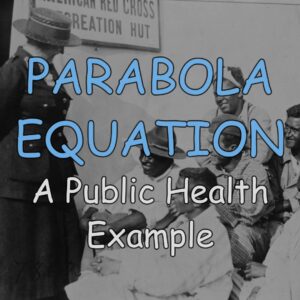
Mathematical functions, including quadratic functions, are used to make predictions in public health. These predictions are vital for estimating the need for medical services, such as psychological support following traumatic events. Quadratic functions can model trends in stress symptoms over time, enabling healthcare systems to anticipate and prepare for increased demand. Our article, “ Parabola Equation: A Real-Life Example (from Public Health) ,” provides further insights and examples.
17. Predicting Healthcare Needs Using Piecewise Linear Functions:
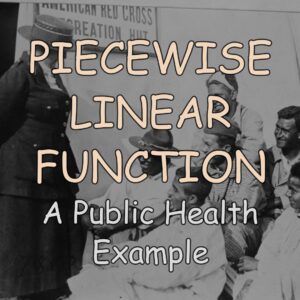
Piecewise linear functions are useful for describing real-world trends that cannot be accurately represented by other functions. For instance, if stress symptoms fluctuate irregularly over time, piecewise linear functions can define periods of increased and decreased stress levels. Our article, “ Piecewise Linear Function: A Real-Life Example (From Public Health) ,” offers an example of how these functions are applied.
18. Designing Medical Prostheses Using the Pythagorean Theorem:

The Pythagorean theorem is applied in the design of medical devices , particularly prostheses for traumatic recovery. Components of these devices often resemble right triangles, allowing engineers to calculate movement and placement for optimal patient comfort and stability during rehabilitation. For a detailed explanation and animations, see our article, “ The 3-4-5 Triangle: A Real-Life Example (from Mechatronics) .”
19. Illustrating Disease Survival Rates Using Cartesian Coordinate Plane:

In medicine, Cartesian coordinate planes are utilized for analyzing historical data, statistics, and predictions. They help visualize relationships between independent and dependent variables, such as survival rates and diagnostic timing in diseases like lung cancer. Our article, “ Coordinate Plane: A Real-Life Example (from Medicine) ,” offers a detailed exploration of this concept, including analyses for both non-smoking and smoking patients.
Math Problems in Industry
Mathematics plays a vital role in solving numerous real-world problems across various industries. From designing industrial robots to analyzing production quality and planning logistics, math is indispensable for optimizing processes and improving efficiency. Here are several examples of real-world math problems in industry:
20. Precise Movements of Industrial Robots Using Trigonometry:

Trigonometry is extensively utilized to direct and control the movements of industrial robots. Each section of an industrial robot can be likened to a leg or hypotenuse of a right triangle, allowing trigonometry to precisely control the position of the robot head. For instance, if the robot head needs to move 5 inches to the right, trigonometry enables calculations to ensure each section of the robot moves appropriately to achieve the desired position. For detailed examples and calculations, refer to our article, “ Find the Missing Side: A Real-life Example (from Robotics) .”
21. Measuring Nanoparticle Size via Cube Root Calculation:

Mathematics plays a crucial role in nanotechnology, particularly in measuring the size of nanoparticles. Cube roots are commonly employed to calculate the size of cube-shaped nanoparticles. As nanoparticles are extremely small and challenging to measure directly, methods in nanotechnology determine nanoparticle volume, allowing for the calculation of cube root to determine the size of the nanoparticle cube side. Check out our article, “ Cube Root: A Real-Life Example (from Nanotechnology) ,” for explanations, calculations, and insights into the connection between physics and math.
22. Understanding Human Emotions Using Number Codes for Robots:

Mathematics is employed to measure human emotions effectively, which is essential for building smart robots capable of recognizing and responding to human emotions. Each human emotion can be broken down into smaller features, such as facial expressions, which are assigned mathematical codes to create algorithms for robots to recognize and distinguish emotions. Explore our article, “ Psychology and Math: A Real-Life Example (from Smart Robots) ,” to understand this process and its connection to psychology.
23. Systems of Linear Equations in Self-Driving Cars:

In the automotive industry, mathematics is pivotal for ensuring the safety and efficiency of self-driving cars. Systems of linear equations are used to predict critical moments in road safety, such as when two cars are side by side during an overtaking maneuver. By solving systems of linear equations, self-driving car computers can assess the safety of overtaking situations. Our article, “ Systems of Linear Equations: A Real-Life Example (from Self-Driving Cars) ,” provides a comprehensive explanation, including animated illustrations and interactive simulations, demonstrating how linear functions and equations are synchronized with car motion.
Math Problems in Information Technology (IT)
Mathematics serves as a fundamental tool in the field of information technology (IT), underpinning various aspects of software development, cybersecurity, and technological advancements. Here are some real-world math problems encountered in IT:
24. Selecting the Right Word in Machine Translation Using Mathematical Probability:

Theoretical probability plays a crucial role in AI machine translation systems, such as Google Translate, by aiding in the selection of the most appropriate words. Words often have multiple translations, and theoretical probability helps analyze the frequency of word appearances in texts to propose the most probable translation. Dive deeper into this topic in our article, “ Theoretical Probability: A Real-Life Example (from Artificial Intelligence) .”
25. Creating User-Friendly Music Streaming Websites Using Mathematical Probability:
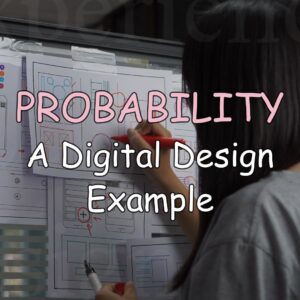
Probability is utilized in user experience (UX) design to enhance the usability of digital products , including music streaming websites. Recommendation algorithms calculate theoretical probability to suggest songs that users are likely to enjoy, improving their overall experience. Learn more about this application in our article, “ Theoretical Probability: A Real-Life Example (from Digital Design) .”
26. Developing Realistic Computer Games with Vectors:
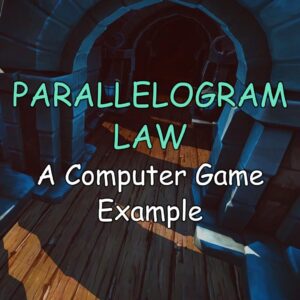
Mathematics is essential in animating objects and simulating real-world factors in computer games. Vectors enable game developers to incorporate realistic elements like gravity and wind into the gaming environment. By applying vector addition, developers can accurately depict how external forces affect object trajectories, enhancing the gaming experience. Explore this concept further in our article, “ Parallelogram Law of Vector Addition: A Real-Life Example (from Game Development) .”
27. Detecting Malicious Bots in Social Media Using Linear Inequalities:
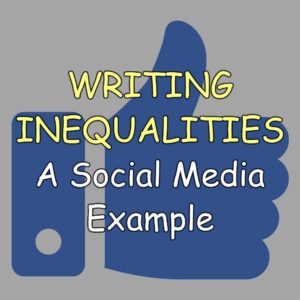
Mathematical inequalities are valuable tools in cybersecurity for identifying malicious activity on social media platforms. By analyzing behavioral differences between real users and bots—such as friend count, posting frequency, and device usage—cybersecurity experts can develop algorithms to detect and block suspicious accounts. Discover more about this application in our article, “ How to Write Inequalities: A Real-life Example (from Social Media) .”
28. Increasing Computational Efficiency Using Algebraic and Rational Expressions

Algebraic and rational expressions are crucial in computer technology for increasing computational efficiency . Every step in a computer program’s algorithm requires valuable time and energy for execution. This is especially important for programs used in various safety and security systems. Simplifying these expressions helps boost computational performance. Our article, “ Algebraic and Rational Expressions: A Real-Life Example (from Computer Technology) ,” explains this in detail.
Math Problems in Legal Issues
In legal proceedings, mathematics plays a crucial role in analyzing data and making informed decisions. Here’s a real-world math problem encountered in legal work:
29. Proving the Reliability of Technology in Court Using Percentages:
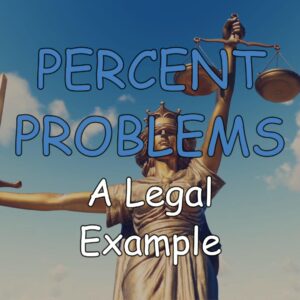
In certain court cases, particularly those involving new technologies like autonomous cars, lawyers may need to employ mathematical methods to justify evidence. Percentage analysis can be utilized to assess the reliability of technology in court. For instance, in cases related to self-driving cars, lawyers may compare the percentage of errors made by autonomous vehicles with those made by human drivers to determine the technology’s safety. Delve deeper into this topic in our article, “ Solving Percent Problems: A Real-Life Example (from Legal) .”
Math Problems in Safety and Security
In the realm of safety and security, mathematics plays a vital role in protecting people, nature, and assets. Real-world math problems in this field can involve reconstructing crime scenes, analyzing evidence, creating effective emergency response plans, and predicting and responding to natural disasters. Here are two examples:
30. Reconstructing a Crime Scene with Inverse Trigonometry:

Forensic specialists rely on mathematical methods, such as inverse trigonometry, to uncover details of crimes long after they’ve occurred. Inverse trigonometric functions like arcsin, arccos, and arctan enable forensic specialists to calculate precise shooting angles or the trajectory of blood drops at crime scenes. Dive into this topic in our article, “ Arctan: A Real-Life Example (from Criminology) .”
31. Responding to Wildfires with Mathematical Variables:

Variables in mathematical language are also prevalent in real-world scenarios like firefighting. For instance, when dealing with wildfires, independent variables like forest type, wind speed and direction, rainfall, and terrain slope influence fire spread speed (dependent variable) . By utilizing specialized formulas incorporating these variables, fire protection specialists can accurately predict fire paths and optimize firefighting efforts. Explore this practical application in our article, “ Dependent and Independent Variables: A Real-Life Example (from Fire Protection) .”
Math Problems in Weather and Climate
In the realm of weather and climate, mathematics is crucial for creating mathematical models of Earth’s atmosphere, making weather forecasts, predicting weather patterns, and assessing long-term climate trends. Here’s an example:
32. Forecasting Thunderstorms with Negative Numbers:
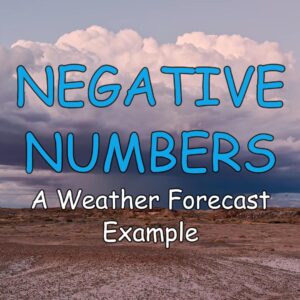
Negative numbers play a significant role in forecasting thunderstorms. The probability of thunderstorms is closely tied to the temperature differences between air masses in the atmosphere. By subtracting negative numbers (representing temperature values) and analyzing the results, meteorologists can forecast the likelihood of thunderstorms based on the temperature differentials. Dive deeper into this concept in our article, “ Subtracting Negative Numbers: A Real-Life Example (from Weather Forecast). “
Conclusions
Many students perceive math as disconnected from the real world, leading them to question its relevance. Admittedly, maintaining this relevance is no easy feat—it requires collective effort. Farmer Alfred can’t tackle this challenge alone. However, introducing more real-world math examples into the school curriculum is a crucial step. Numerous studies have demonstrated that such examples significantly enhance students’ motivation to learn math. Our own pilot tests confirm this, showing that a clear connection between real-world problems and math education profoundly influences how young people view their future careers.
Therefore, to increase the overall relevance of math education and motivate students, we must prioritize the integration of real-world examples into our teaching practices. At DARTEF, we are dedicated to this cause, striving to bring authenticity to mathematics education worldwide.
- Vos, Pauline. ““How real people really need mathematics in the real world”—Authenticity in mathematics education.” Education Sciences 8.4 (2018): 195.
- Cambridge dictionary, Meaning of problem in English.
- Reif, Frederick. Applying cognitive science to education: Thinking and learning in scientific and other complex domains . MIT press, 2008.
Privacy Overview
What real-life math topic interests you.
Interested in seeing how a specific math topic is applied in the real world?
Let us know your preferred topic, and we’ll create a blog post and video showcasing its practical applications.
If you’d like, you can also let us know which real-world domain you’d like us to explore!
20 Examples of Algebra in Everyday Life We Can All Relate To
One of the most common questions I get as a high school math teacher is “where exactly will I use algebra in the real world?” Fortunately, there are plenty of examples of algebra in everyday life!
Many students find it helpful to know just where they can apply math in their everyday life. After all, if it isn’t useful, is there a point to learning it at all?
Now, I will be the first to admit that we don’t all use abstract algebra to make our lunches or drive to school or work. But, I can guarantee that you will be surprised by just how much material and real-life examples of algebra you can apply to your real life.
I am excited to share my personal top 20 answers that I give to my own students who ask me this question! How many of these uses of algebra can you relate to?
What is Algebra?
Considered the father of algebra, Muhammad ibn Musa al-Khwarizmi was a Persian mathematician famous for using the Arabic word al jabr . Originally used to describe completion or rejoining, we now know algebra as a tool to determine unknown variables and unknown values.
Depending where in the world you study, the concepts of algebra will vary quite extensively. But in general, algebra involves using an algebraic expression to represent real-life situations so that we can determine the value of an unknown quantity. In practice, this often involves moving terms between two sides of the equation in order to solve the equation .
20 Examples of Algebra in Everyday Life
Whether you realize it or not, your basic knowledge of algebra helps you complete many of the daily tasks that you are responsible for in your everyday life! Even if mathematics is not related to your chosen career path, there are still examples of algebra in everyday life that you can relate to! Let’s dig into this list so that you can develop a new appreciation for this beautiful subject!
1. Calculating Gas Mileage
One of the best real-life applications of algebra is the ability to figure out how far you can drive with a specific number of gallons of gas. One of my biggest fears is being stuck on a freeway as my car’s gas tank is slowly depleting. But, with some knowledge of your vehicle’s mileage, you can figure out how much gas you need to get from point A to B.
2. Calculating the Length of a Trip
Okay so you know how far you are going to get on a gallon of gas. But how long will it take you to get there? If you know how fast you are travelling, and you know how far away your destination is, you can determine the amount of time it will take! This is a simple use of algebraic operations that can help pass the time on a long road trip!
3. Financial Planning
I credit my own financial literacy to my understanding of algebra and mathematics in general. Understanding algebra helped my family build our bank account, stay out of debt, and ensure that we always have enough money for our purchases before we make them.
There are so many problems that students solve in the finance area in studies of algebra. Calculating how much money is required, or the total amount of money after some amount of time are very valuable skills that are transferable to real-life problems that involve money. So pay attention!
4. Budgeting
Another important part of being financially literate is understanding how to set up a budget that balances your monthly expenses and income. Being able to set goals and calculate how much money is needed to work toward them is something that algebraic thinking helps make possible!
5. Comparing Cell Phone Plans
Cell phone companies all offer different plans with specific numbers to entice you to sign up for their service. It might seem like common sense to choose the cheapest option, but having good problem solving skills can help you get the best plan for your own needs without spending too much money!

6. Calculating Exchange Rates
Going on a trip overseas? Did you bring enough money? Knowing how to use simple algebraic concepts and exchange rates can help you calculate how much money is required for your trip.
7. Field of Art
Many people are surprised to hear about the application of algebra in the arts. While many people view the field of art and mathematics as separate, they are more closely related than you might think! Sure, artists aren’t sitting down solving complex algebraic equations and math problems. However, they do use ratios and proportions alongside the principles of art to create patterns, balance, contrast, and more.
8. Time Management
One of the most difficult problems people face in the real world is management of time. Do you ever feel like you are always spending too much time on the wrong thing? Whether it is planning your morning routine or figuring out how much time a task will take, time management is an essential life skill.
The words we use to describe our units of time all have deep roots in algebra and our understanding of fractions! Understanding exactly how much time half of one hour is goes a long way!
One of the most common examples of algebra in everyday life happens every time you cook or bake! Recipes are designed to help you bake a specific amount of food or dessert. But what if you want half of that amount? Or double? If you couldn’t use algebra, you could end up with WAY too much cake (not that that is a bad thing…).
10. Grocery Shopping
Next time you find yourself at the grocery store, pay attention to how often you are required to think about algebra. You will be shocked!
There are discounts from the original price everywhere you look. And it seems that every product has two size options to choose from. Understanding basic math and use of algebraic operations is the best way to keep the total cost of your grocery bill as low as possible!
11. Logical Thinking
You will not apply every mathematical problem you solve to the real world. However, constant exposure to complex problems helps develop logical thinking and problem solving skills. This is a simple example of how this invaluable skill will help you solve real-life problems in your daily life and in the workplace.
12. Chemical Sciences
You’ve probably seen the word problem that asks how much of each chemical is required to form some sort of solution, right? Setting up two linear equations and solving the system is something that many chemists do to ensure they have the correct proportions in their solutions.
13. Mental Algebra
One of the most practical applications of algebra is being able to perform quick mental algebra. There are too many aspects of daily life to list, but a great example is if you are working as a part time cashier. Sure, the cash register will tell you how much change to give, but basic math is helpful if there is ever an argument. The customer is always right, after all!
14. In Video Games?
If you have been around Math By The Pixel before, you’ll know that a big part of my story is that I am a huge fan of retro gaming. But do I actually use algebra while playing video games?
Well, yes and no. As a math teacher, my knowledge of quadratic equations has helped me understand the impact that gravity has on a video game character. This helps me make insane jumps that many people just can’t make.
15. Doing Your Taxes
One of the most common complaints I get from students is that our math courses don’t teach them useful skills like doing their taxes. And taxes truly are one of the examples of algebra in everyday life that can help you out in this finance area! All of the skills you gain when working with percentages and solving for unknown values are actually quite applicable to filing your taxes. But I agree with the students on this one – we need a course on this useful life skill!
16. Construction
Whether you are calculating the area of a rectangle to find the square footage on a floor plan, or building a deck that will support some number of people, the use of algebraic operations is essential in so many construction jobs and trades .
17. A Mathematically Perfect Cup of Coffee
The perfect cup of coffee is essential to the start of any math teacher’s day. The best way to make the perfect cup is using a simple equation to determine the exact amount of water and coffee needed to make the perfect cup. Setting up a quick ratio and cross multiplying to solve for variable x is worth the effort. Trust me.
18. Computer Programming
As a math teacher turned web developer, I can’t tell you the number of times my knowledge of algebra concepts has come in handy. If you aren’t working in technology, this won’t be one of the examples of algebra in everyday life you can relate heavily to. But if you are, you will find knowledge of ratios, proportions, and percentages come in handy quite often!
19. Health and Fitness
Another one of the examples of algebra in everyday life that many people overlook is in exercising to maintain health. Whether it is working with your body mass index to optimize weight loss, or planning out caloric intake, you would be surprised how often a simple equation can come in handy!
20. Home Improvement
As a home owner, you will see examples of algebra in everyday life quite often. Whether you are looking to determine how much paint you need to cover a wall, or calculating the square footage of sod you need to cover your backyard, there are real-life examples of algebra in home improvement everywhere you turn.
My wife (who is also a math teacher) and I actually recently worked together to determine the most efficient use of materials while building our kids this outdoor mud kitchen! We were proud to say that our skillful application of algebra left us with only 6 inches of wasted wood by the end of the project!
Using Examples of Algebra in Everyday Life
Algebra is widely regarded as one of the most important branches of mathematics. While it isn’t always easy to see, there are examples of algebra in everyday life wherever you look. Even if you aren’t solving a traditional mathematical problem to determine unknown variables, or working with algebraic formulas , algebra is still everywhere in our daily lives.
As a math teacher, I see the importance of algebra in a way that many don’t. Algebra is a sense that we all start to understand in the early stages of development in our lives as we learn basic problem solving skills. These skills only grow and develop over time as we learn to apply them to more and more complex scenarios.
I hope that you found something surprising on this list that you can apply in your own life! This is one of my favorite essential questions to discuss with my classes at the beginning of the year. I truly believe that understanding where you can find examples of algebra in everyday life enhances your appreciation for the subject!
Did you find this guide to examples of algebra in everyday life helpful? Share this post and subscribe to Math By The Pixel on YouTube for more helpful mathematics content!
RECOMMENDED FOR YOU
Quadratic Formula Word Problems Answer Key and Lesson
4 All Students Take Calculus Examples for Trigonometry
Maths How To with Anita

7 Examples of Algebra in Everyday Life (Simplified Real-Life Applications)
Do you ever feel like algebra is just a bunch of meaningless equations and symbols? Well, think again! Algebra is actually all around us in everyday life. In this blog post, we will discuss seven examples of how algebra is used in the real world.
We will also provide real-life applications for each example. So whether you’re a student trying to understand why you’re learning this stuff or a teacher looking for ways to make it more relevant to your students, read on!
Examples of Algebra in everyday life
Whilst algebra has many applications in daily life, here are my favorite ways of using algebra to solve problems.
1. Calculating discounts at the store
You’re at the store and you see a shirt that’s on sale for 20% off. How much will it cost? This is a great opportunity to use some algebra!
Here’s how we can set this up:
Let x represent the original price of the shirt
Then, we know that:
x – 0.20x = the new price of the shirt
We can simplify x – 0.20x to 0.8x.
So then the new price of the shirt is 0.8x
If the original price of the shirt is $30,
then the new price of the shirt = 0.8 x 30 = $24
2. Are we there yet? Calculating how long it will take to get somewhere
Remember Bart Simpson asking ‘Are we there yet?’ on repeat.
Well, we can use algebra, specifically the formula linking distance, speed and time, to calculate how long it will take to arrive at your destination.

Say your car is traveling at 60 miles per hour, then the formula would be:

So instead of asking ‘Are we there yet?’, you could look out the window for a sign that shows how many miles to your destination then use the Distance-Speed-Time formula.

So the time to get to Las Vegas will be 72 divided by 60 which is just over 1. So it will be just over 1 hour to get there.

The distance – speed – time formula is a useful math formula to remember.
3. Figuring out how many pizzas to order
You’re having 7 friends over and you want pizza.
You each can eat at least 4 slices.
If there are 8 slices in a pizza, how many pizzas should you order?
You can use algebra to find how many pizzas you should order by writing an equation and solving it.
Let x represent the number of pizzas you should order.
So then you and 7 friends is 1 + 7, which is 8.
If each person eats 4 slices, the total number of slices is 8 x 4 = 32
Since each pizza has 8 slices, the number of slices in total will be 8x.
Here’s what it looks like as an algebraic equation:

So you will need to order at least 4 pizzas.
If your friend eat more than 4 slices each you need to order more pizzas.
If your mom and dad, brothers & sisters want pizza too, you will need to order more.
So we could write it as an algebraic inequality like this:

4. Calculating how many hours you need to work
Imagine there is a new pair of jeans you want that cost $75.
If your parents give you $25 towards them, how many hours of babysitting do you have to work in order to buy them?
Well you only need $50 right because $75 – $25 = $50
Let us say you earn $5 an hour for babysitting.
Then you will need to work for 10 hours.
Here’s what it looks like in algebra:

5. When adjusting amounts in a recipe when cooking
Let’s say you want to make some choc-chip cookies but the recipe requires 2 eggs and you only have 1 egg.
You will need to adjust the amounts of the rest of the ingredients.
This is a simple example where you can simply halve each ingredient.
Alternatively, you could use your knowledge of algebra to write an algebraic equation to calculate all the other quantities.
This is useful when its not a simple case of doubling or halving amounts.
For example if you wanted to make choc-chip cookies but you only have 2 cups of flour and you need 3 cups.
This means your recipe will be 2/3 of the original recipe.
So your formula will be:
new amount = 2/3 x recipe amount

6. Planning a budget and sticking to it
Budgeting is so important, whether you’re an individual, a family or a business. And algebra can help!
Let’s say you have $200 income in a month. You want to budget this out so that you don’t overspend and can even save money each month. Perhaps for an end-of-school holiday, a car or college.
List all your expenses, for example:
- $16 cell phone
- $30 monthly bus pass
- $50 going out with friends
Add up your expenses to find your monthly expenses.
16 + 30 +50 = 96
You should track your expenses in an app or spreadsheet to see what you are actually spending your money on. These days with apple pay and a cashless society it is very easy to spend money and not realize how much we are spending over. a month.
Subtract your total monthly expenses from your income to calculate the amount leftover that you can save (or invest).
Using algebra this could be done like this:
Let x represent your monthly expenditure.
Then we know that:
200-x = the amount we can save each month
Of course, this is just a simple example. In reality, you may use a spreadsheet (which is what I use). But you will need to understand the mathematics so you can enter a formula in your spreadsheet. This way when your expenses vary each month your savings will be automatically calculated.
So algebra can help you to create a budget, stick to it and even save or invest.

7. Comparing cell phone plans
The time will come when your parents stop paying your cell bill. In order to find the best value for money, you need to be able to compare different cell phone plans.
Algebra can help you do this!
Let’s say you’re looking at two different cell phone plans:
Plan A: $60/month with unlimited talk and text and 5GB data
Plan B: $20/month with unlimited talk and text and 1GB data plus $10/GB over this amount.
In order to compare cell phone plans, we need to find out how much data we use each month. You may need to look at past statements for this information.
Just say you use roughly 3GB of data each month.
On Plan A, the 3GB is included so your total bill would be $60
On Plan B, 3GB is over the 1GB of included data so you will need to pay extra. Each plan will have different costs.
The amount you will pay is calculated as follows:
# of GB over plan = 3GB minus 1GB = 2 GB
Cost for extra GB = 2 x $10/GB = $20
Total monthly cost = $20 + $20 = $40
So plan B ends up being $20 cheaper.
You could write this as a formula as:
Total monthly cost = 20 + (# GB used – 1GB) x 10
Since the amount of data used each month may vary, it Is called a variable.
Different plans may charge different excess data costs too.
You could set up a spreadsheet to calculate the different monthly costs for the varying amount of data used to help you decide which cell phone plan is best for your needs.

You can see that once you use over 5GB of data the monthly cost for plan B will be more than $60. This is when plan A is the best value.
So knowing how to write a formula can help you compare cell phone plans.
Wrapping up and my experience with using examples of Algebra in everyday life in the classroom.
There are countless other examples of how algebra is used in daily life. These are just a few of the ways that I use it on a regular basis to problem solve. I’m sure you can think of many more!
From my 14+ years of teaching high school mathematics to students of all abilities, I have observed that some students need to see the relevance of abstract concepts like Algebra in order to be interested.
Start the lesson with a hook or example of how they can use algebra in real life so they buy into the topic and are more engaged.
If you’re a teacher, try incorporating some real-life examples into your lessons. And if you’re a student, pay attention to the ways that you use algebra in your daily life. It will help you to better understand the concepts and make them more relevant to your own life.
I hope this article has helped you to see how algebra is used in everyday life.
Related posts:


- Mathematicians
- Math Lessons
- Square Roots
- Math Calculators
How is Algebra Used in Real Life – 10 Practical Examples Explained
JUMP TO TOPIC
The Role of Algebra in Everyday Life
Role of algebra in budgeting and expenses, role of algebra in managing loans and interest rates, role of algebra in investment and profits, role of algebra in construction and engineering, role of algebra in travel planning and scheduling, role of algebra in computer programming and technology, role of algebra in logical thinking and critical analysis, role of algebra in patterns, formulas, and rules, role of algebra in gaming, sports, and hobbies, role of algebra in cooking, crafting, and interior decorating.
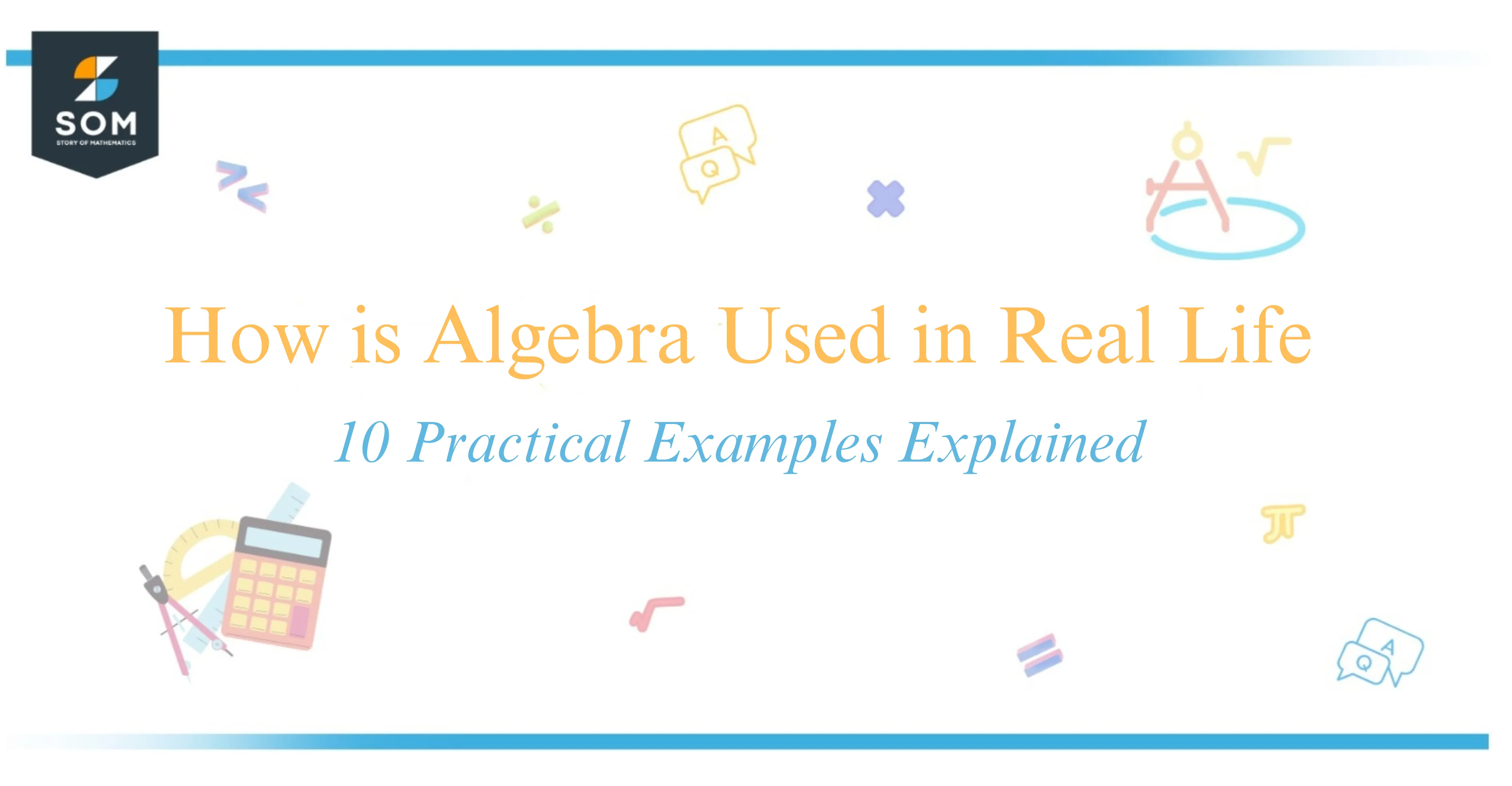
To use algebra in real life , I first grasp the fundamental concepts of variables and equations. Algebra stretches far beyond the walls of my classroom, seamlessly integrating into my daily routines and responsibilities. It’s the silent partner in my budgeting, where balancing expenses becomes a balancing act of numbers.
In my career, algebra unlocks a deeper understanding of various systems . For example, robotics use algebraic geometry to study the motion of robots with multidimensional search spaces. By applying algebra , I can model and solve problems with an array of possible outcomes and constraints.
Algebra is a cornerstone of mathematics that pops up in numerous daily activities , often without my even noticing. From budgeting to cooking, the use of variables , equations , and the algebraic expressions simplifies complex tasks.
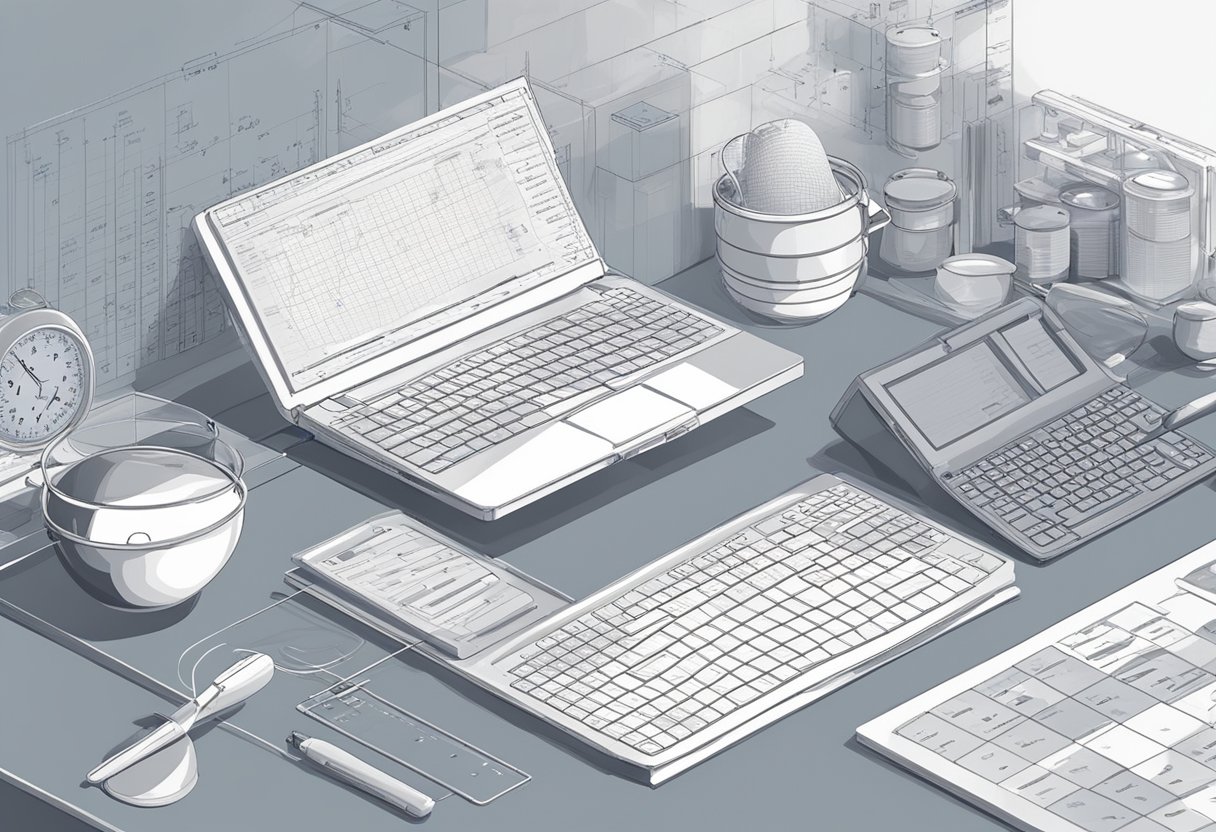
Knowing how to manipulate these allows me to solve practical problems effectively. Here’s how I apply algebra in real life:
Budgeting : Crafting a monthly budget requires balancing income and expenses . Variables represent the amounts, while equations make sure everything adds up. For example, if my income is $I$ and my monthly expenses are a sum of individual costs $c_1, c_2, …, c_n$, the algebraic expression looks like this: $I = c_1 + c_2 + … + c_n$.
Cooking : Modifying a recipe based on servings involves ratios and proportions , which are algebraic concepts. For a recipe that serves $4$ and I need it for $6$, I’ll use a simple formula : Multiply each ingredient quantity by $\frac{6}{4}$.
Shopping Discounts : When I’m out shopping and there’s a $20%$ sale, I calculate the discounted price using the original price $P$. The sale price $S$ is $S = P – (0.20 \times P)$ or simply $S = 0.80P$.
Fitness Tracking : Keeping up with my fitness regimen involves calculating calories and exercise durations. If a workout burns $C$ calories per minute and I exercise for $t$ minutes, the total calories burned is $Ct$.
Here’s a quick table summarizing the use of algebra in everyday situations:
Algebra is not just an abstract tool; it is a vital part of managing finances in my everyday life. When I sit down to create a budget, I’m essentially using algebraic equations to plan my spending, savings, and investments.
For example, when planning monthly expenses, I might use a simple equation:
$\text{Income} – \text{Expenses} = \text{Savings}$
Here’s how algebra becomes practical:
- Income : I calculate my total income from different sources, such as my salary, freelance work, and any other passive income.
- Expenses : I then sum up my monthly bills, groceries, transport, and other known costs.
- Savings : What I aim to save is the variable I need to solve for in the equation.
I use algebra to calculate my monthly payments using the formula for an ordinary annuity, which is:
$M = P \frac{r(1 + r)^n}{(1 + r)^n – 1}$
- ( M ) is the monthly payment,
- ( P ) is the principal loan amount,
- ( r ) is the monthly interest rate (annual rate divided by 12 months),
- ( n ) is the number of payments (loan term in years multiplied by 12 months).
By plugging in the values, I can budget my monthly expenses effectively, ensuring I don’t overspend and land myself in financial hot water.
When I assess the impact of an interest rate on my loan, I recognize that a lower rate can significantly reduce the total amount of interest I’ll pay over time. For instance, if I consider two loans with different interest rates, algebra helps me determine which is more cost-effective for my budget and long-term financial goals.
Here’s a quick comparison of two different interest rates on a $10,000 car loan over 5 years:
Investing is a financial strategy I use to grow my income and savings over time. To make informed decisions, I rely heavily on algebra to predict potential profits and manage my investments. For instance, when considering the future value of an investment, I calculate compound interest using the formula:
$A = P \left(1 + \frac{r}{n}\right)^{nt}$
Here’s a breakdown of this equation:
- ( A ) is the amount of money accumulated after ( n ) years, including interest.
- ( P ) is the principal amount (the initial money I put in).
- ( r ) is the annual interest rate (decimal).
- ( n ) is the number of times that interest is compounded per year.
- ( t ) is the time in years.
When planning my budget, algebra aids me in balancing my income, expenses, and savings. The basic structure of a budget can be summarized by:
$\text{Income} – \text{Expenses} = \text{Savings}$
I also assess loans and manage finances by understanding the interest rates and calculating monthly payments using amortization formulas.
The formula for figuring out the monthly payment (( PMT )) on a loan is:
$PMT = \frac{P \times \frac{r}{n}}{1 – (1 + r)^{-n}}$
Calculating taxes is another essential use of algebra. To find out my after-tax income, I subtract the tax, which is a percentage of my income, as follows:
$\text{After-Tax Income} = \text{Income} – (\text{Income} \times \text{Tax Rate}) $
By mastering these algebraic operations , I ensure my investments are profitable and my financial future secure.
In my career as a construction engineer, I’ve constantly engaged with algebra. It’s vital for creating stable structures and ensuring buildings can withstand stress. For example, calculating loads involves algebraic equations, so I can determine if a beam will support the weight using the formula:
$$ Load = \frac{Weight}{Area} $$
In the realm of construction scheduling, I integrate algebra to manage timelines efficiently. By establishing critical paths and resource allocations, I can pinpoint areas that need attention, making sure that my projects stay on track.
In my approach to technology and computer programming, I’ve also noticed a strong reliance on algebra. Whether it’s algorithm development or designing complex structures through Computer-Aided Design (CAD) software, algebraic concepts are crucial. Let me give you a brief glimpse at how algebra intersects across various applications:
When I plan a trip, algebra becomes a trusty companion, particularly in managing schedules and budgets. The use of algebra in travel planning is not just theoretical; it’s a practical tool that helps me make the most of my time and money.
To start with, creating a travel schedule can often feel like a puzzle. I use algebra to calculate travel times between destinations, accounting for layovers and connections. For example, if my flight from A to B takes 3 hours and my layover in B before flying to C is 2 hours, I can figure out my total travel time with a simple algebraic expression, ($ t_{\text{total}} = t_{\text{A to B}} + t_{\text{layover}} + t_{\text{B to C}}$ ).
In budgeting, I list all expenses such as transportation, accommodation, and activities. Then I sum them up, letting algebra help me keep a tight rein on spending. Here’s a small table I might create:
The application of algebra extends to more complex scenarios in engineering and construction , where it assists in optimizing project schedules and resource allocations. In computer science , algorithms for scheduling are embedded in various applications, using algebraic formulas to automate and enhance the planning process.
Algebra is a cornerstone in the realm of computer programming and technology. I often see it as the hidden hero in various applications spanning from simple software to complex engineering systems. It forms the backbone of algorithms, which are the step-by-step instructions I follow when writing code for anything from sorting data to encrypting information.
In computer science, I leverage algebraic structures to optimize code and solve computational problems. For example, the boolean algebra helps me in creating logic circuits and program decision-making capabilities in software. Here’s how algebraic concepts are applied:
Binary Operations : These allow me to perform tasks in programming languages, using operators such as $+$, $-$, $\times$, and $\div$.
Linear Algebra : It’s crucial in the construction of 3D graphics and animations, which are essential in video games and simulations.
Matrices : I use these for data organization and to perform multiple calculations at once, which is integral in image processing and machine learning tasks.
Algebra has its applications in scheduling and optimization algorithms too. Whether it’s assigning resources efficiently or finding the quickest routes for travel, algebra provides me with methods to compute optimal solutions.
Let me give you an example: when I’m dealing with robotics, I apply algebraic geometry to study the dynamics of robotic mechanisms. This involves handling a myriad of dimensional states and motions—something that is made manageable through algebraic principles.
In technology-enhanced education, algebra facilitates better learning tools, offering both visually engaging and interactive ways for students to grasp mathematical concepts. This contributes to a deeper understanding, heightened interest, and improved proficiency in mathematics.
Algebra is much more than just manipulating symbols and solving equations for me. It’s the backbone of my logical thinking and critical analysis skills. When I tackle an algebraic problem, I’m engaging with an entire system of logic and patterns that help build my reasoning abilities.
For instance, consider the simple algebraic formula for solving for ( x ) in a linear equation: ( ax + b = c ). This equation might represent a real-life problem, like calculating the price after a discount (where ( x ) is the original price). Stringently following algebraic rules, I rearrange the formula to ( x = $\frac{c – b}{a}$ ), a process that reinforces my understanding of operations and the order in which they should be conducted.
Algebra strengthens my critical thinking by requiring me to apply sets of rules—properties of operations, for example—to various problems. These formulas and rules are not arbitrary; they are logical structures that I can rely on to find clarity in confusion.
Algebra serves as the foundation for problem-solving in various everyday scenarios. When I encounter patterns , algebra helps me to recognize and understand the structure behind these arrangements. For instance, a simple pattern like an increasing sequence of odd numbers can be represented algebraically as (2n + 1), where n represents the position in the sequence. This aids in predicting subsequent numbers, demonstrating a relationship ruled by algebra.
In my daily life, I use formulas to calculate things like interest rates or to determine the distance I travel. This use of formulas represents a set of rules that guide my critical thinking and enable accurate problem-solving. Here’s a snapshot of how I might use a formula:
Logic and reasoning intersect with algebra when I face a problem requiring a structured approach. Algebraic expressions give me a powerful language to describe relationships and solve problems methodically. This intersection fosters my critical thinking , which becomes instrumental when I’m trying to discover a rule through an observed pattern. It’s exciting to deduce a formula from scattered information, and algebra is my go-to toolkit for doing just that.
In gaming, I often find algebra underlying the design and development of many video games, particularly when programming movements or scoring systems. For instance, in a platformer, the character’s jump might be calculated using the formula ( s = ut + $\frac{1}{2}at^2$ ), where ( s ) is displacement, ( u ) is the initial velocity, ( a ) is the acceleration due to gravity, and ( t ) is time.
Sports analytics use algebra to enhance team performance and strategy. Take basketball, where player efficiency is often computed using a complex algebraic formula to analyze performance statistics.
As for cooking, algebra helps in scaling recipes. If I want to double a recipe, I apply proportional reasoning, a fundamental algebraic concept, to adjust ingredient quantities. With crafting and art, algebra assists in planning layouts and dimensions, ensuring symmetrical designs or patterns.
For children’s education and hobbies, algebra fosters problem-solving skills. It might be as simple as figuring out the right amount of paint for a color mix, calculated by a ratio or equation.
Cooking: When preparing a meal, algebra helps me adjust recipes. For instance, if a recipe calls for 4 cups of flour to serve 8 people, and I only need to serve 2, I use the algebraic equation ($ \text{required flour} = \frac{4}{8} \times 2 $) to determine that I need 1 cup of flour.
- Original servings: ( $s_1$ )
- Desired servings: ( $s_2$)
- Original ingredient amount: ( $a_1 $)
- New ingredient amount: ($ a_2 = \frac{a_1 \times s_2}{s_1}$ )
Crafting: Algebra aids me in creating and executing my designs accurately. If I’m designing a quilt, the number of squares (( q )) I need will depend on the size of the quilt and the size of each square. The equation ($ q = \frac{\text{total area of quilt}}{\text{area of one square}} $) saves time and materials.
- Total area of project: ( $A_t $)
- Area per piece: ($A_p$ )
- Pieces required: ( P =$ \frac{A_t}{A_p}$ )
Interior Decorating: When redecorating my living space, algebra helps me maximize the area and aesthetics. If I need to cover a wall with wallpaper, I need to know how many rolls to purchase. I’ll use the equation ($ \text{rolls needed} = \frac{\text{wall area}}{\text{coverage per roll}} $) to get the right quantity.
In exploring the intersection of algebra and daily life , I’ve highlighted its undeniable presence in the routines and decisions we navigate. From managing personal finances to interpreting data trends in work settings, algebra is not confined to textbooks—it thrives in the world around us.
I’ve found that recognizing variables and constants, denoted as $x$ and $c$ respectively, equips us with the insight to forecast outcomes. In doing so, we harness the capability to plan and strategize more effectively. Whether we’re considering the purchase of a new home, conserving gas based on our vehicle’s efficiency, or baking with precision, algebraic principles guide us.
Appreciating that a formula such as $distance = speed \times time$ can determine travel details, or that calculating an unknown expenditure with $income – expenses = savings$, is practical algebra at play. My experiences have shown that algebra isn’t just about solving equations; it’s a toolkit for problem-solving.
- Pre Calculus
- Probability
- Sets & Set Theory
- Trigonometry

Math Wheels for Note-taking?

How to Teach Real Life Math Problem Solving Activities

Growing up, I vividly recall a moment when a classmate questioned our teacher about the relevance of a math concept. You know the questions he asked already. “Why do we need to know this, and when will we ever use this?” The teacher’s response, delivered with a hint of exhaustion, was a curt, “You’ll use it someday, and you need to know it because you just do.” Since I’ve been teaching, I understand her exhaustion with those questions, but I knew I wanted to create a different classroom dynamic. I wanted to create an environment where questions were welcomed and explored. That’s why I make it a point to infuse real-life math problems into lessons. I want to provide an authentic learning experience that has students applying concepts in relevant situations. Today, we explore real-life math problems, why they’re important, and ways to bring them into your classroom!
What Are Real Life Math Problems?
I love using real life math problems because instead of just teaching math concepts from a textbook, I get to guide my students through challenges that directly relate to their lives outside of the classroom. Real-life math problems are exactly what they sound like. They are math problems that have a direct connection to the world around us.

Have you ever opened up a textbook, looked down at a problem, and thought to yourself, “Gosh, what does this EVEN mean?” I know I have, which is humbling since, as teachers, we are expected to have the answers. That was a huge signal to me that if I’m not understanding these abstract scenarios, then my students aren’t either. With middle schoolers, in particular, we have a small window to catch their attention and create buy-in. These abstract, hypothetical, and wordy problems weren’t cutting it for me to do that and make math approachable.
I turned to the experts, my students. If you want your middle schoolers engaged, you have to meet them where they are. By presenting math in the context of situations they encounter, I show my students the practical applications of what they’re learning.
From budgeting their allowance to measuring ingredients for a recipe, and from calculating distances for a road trip to determining the best deals at the grocery store, these are examples of real-life math problems that I incorporate into my lessons. These are just a few examples, but really, they are endless. By engaging with these real-life math problems, my students master math concepts. They’re also developing critical thinking skills and problem solving abilities that will serve them well beyond the walls of our classroom.
Benefits to Real Life Math Problems
Using real-life math problems makes learning math more engaging and meaningful for our students. By connecting math concepts to their everyday experiences, we capture their interest. We can then show them the relevance of what they’re learning. No more asking why and when we will need to know. Instead, they’re eager to dive into each problem, knowing that the skills will directly be used in their lives.

Engaging with real-life math problems creates a deeper understanding of math concepts. When students see how math applies to real-world situations, they’re able to grasp abstract concepts and make connections. It’s not just about memorizing formulas and algorithms. It’s about understanding the underlying principles and their role in the world around us.
Using real-life math problems promotes cross-curricular learning. Math doesn’t exist in a vacuum, which surprises some of our students. It intersects with various other subjects and topics. By including real-life scenarios in our math lessons, we’re able to integrate concepts from science, technology, engineering, life skills, and more. Our students learn to approach problems from multiple perspectives. This prepares them for the diverse challenges they’ll encounter in their academic and professional lives.
We can’t forget about the joy of discovery that comes with solving real-life math problems! There’s nothing quite like the satisfaction of cracking a tough problem or finding a creative solution to a real-world challenge. By immersing ourselves in these math adventures, we’re experiencing the thrill of exploration and the joy of discovery firsthand.
Real Life Math Problem Solving Activities
Below are just a few examples of real life math problem-solving activities that bring math to life in your classroom. By engaging our students in hands-on, practical challenges that relate to their everyday experiences, we ignite their curiosity, deepen their understanding, and empower them to see the world through a mathematical lens.
Grocery Store Math
First, let’s go on a grocery run without leaving our classroom! Start by assigning each student a budget and providing them with a list of grocery items to purchase. In the past, I printed out pictures of items and laminated them for use the following year. If you have access to pretend play food , middle schoolers will get a kick out of it, too! Then, challenge them to navigate the desks and rows of tables, scouring for the best deals while sticking to their budget.

Students will explore various math concepts. First, they’ll use addition and subtraction skills to track their spending and ensure they stay within their budget constraints. Then, they’ll flex their multiplication muscles as they calculate prices and compare sales to identify the most cost-effective options.
But it doesn’t stop there! This activity also encourages students to make strategic decisions about what to buy based on their budget and nutritional needs. They’ll practice critical thinking as they weigh the pros and cons of different purchasing options, considering factors such as price, quantity, and nutritional value.
By actively participating in budgeting and decision-making processes, students develop financial literacy and responsible consumer habits. They learn the value of money, the importance of budgeting, and the significance of making informed choices. Skills that will serve them well both now and in the future.
You can take this grocery store math to the next level with some small changes.
- Instead of a grocery list, provide them with a recipe and have them buy enough of the ingredients to make the recipe.
- Place a few items on sale and tell students they must buy the item with the largest discount.
- Don’t forget tax. Making students account for sales tax without going over their budget is another real life challenge.
Measurement Madness
Who says math can’t be delicious? Get ready to whip up a storm and turn baking into a mouthwatering math lesson! You may need access to a kitchen or similar tools to help with baking. I provide students with a treat recipe, usually a simple cookie recipe, and challenge them to adjust ingredient quantities based on different serving sizes.
As students roll up their sleeves and don their aprons, they’ll dive into a world of fractions, multiplication, and division. First, they’ll practice fractions as they scale the recipe up or down to accommodate different serving sizes. Need to double the batch for a larger crowd? No problem! Students will use their fraction skills to adjust ingredient quantities accordingly.

As students tackle multiplication and division, they’ll calculate ingredient quantities with precision, ensuring that each batch of goodies turns out just right. Whether they halve the recipe for a smaller gathering or triple it for a bake sale, students will practice their math skills while whipping up delectable delights.
As they savor the results of their labor, students will not only enjoy the delicious results but also gain a deeper appreciation for the role of math in the culinary arts. They’ll see firsthand how math concepts can be applied in practical, real-life math situations!
This real life math activity fosters important life skills such as following instructions, measuring accurately, and working collaboratively. Our students learn the importance of precision and attention to detail. These qualities are essential both in the kitchen and beyond.
Ready to step this challenge up? Turn your students into chefs and bakery owners and have them calculate the cost to make the recipe, how much they would sell the item for, and how much profit they would make.
Travel Time Trials
If you ask your students where they would love to travel, they’ll shout out places far away and expensive. Most of the time, they aren’t factoring in cost. They just know the place looks cool and famous people have been there! So, in this real life math problem-solving activity, I’m also giving them a little reality check. I task my students with planning a hypothetical road trip to their dream destination, whether it’s a coastal getaway, a mountain retreat, or a bustling city excursion. Then, I challenge them to calculate travel times and distances between each stop along the way.

As students plot their route and map out their itinerary, they’ll dive into a world of multiplication and division. First, they’ll practice multiplication as they calculate the total distance to be traveled, breaking it down into manageable segments between each destination. Need to cover 300 miles in one day? For example, students will use their multiplication skills to determine how many hours of driving that entails.
As students tackle division, they’ll calculate travel times based on average speeds and estimated distances between stops. Whether it’s dividing the total distance by average speed to determine travel time or breaking down the journey into hourly increments, students will hone their division skills while planning their epic road trip.
While researching, students will keep track of the cost of different types of transportation and compare different companies or methods to find the most cost-effective choice. As they research attractions, landmarks, and points of interest along their route, students will sharpen their math skills and gain valuable insights into geography, culture, and planning. They’ll learn about important life skills such as time management, budgeting, and decision-making.
Take these trip planning skills to the next level by giving students a budget for their trip and a time limit. After all, there aren’t many jobs where you can just take off for an unlimited amount of time. Challenge them to fit their road trip into the budget and time constraints.
Be Your Own Architect – A Real Life Math Problem Solving Activity
This real life math problem-solving activity has our students putting on their creative architect hats! Here’s the blueprint for success: I give them the task of designing their dream home or crafting a futuristic cityscape using graph paper or digital design tools you may have access to at school.
As students sketch out their vision, they’ll dive deep into the world of geometry and measurement. They’ll practice calculating the dimensions of rooms and buildings, exploring concepts like area, perimeter, and scale in a hands-on, creative way. As they craft their designs, they’ll consider factors such as proportion, symmetry, and aesthetics. This activity has them practicing their spatial reasoning skills and unleashing their creativity in the process. Whether it’s picturing an open-concept living space or designing a sleek skyscraper, our students will have the opportunity to bring their architectural dreams to life.

This activity helps our students understand the principles of architecture and how math plays a crucial role in the design process. By exploring concepts like scale and proportion, students gain a deeper appreciation for the art and science of architecture and learn how mathematical concepts translate into real-world structures. They’ll learn important life skills such as problem-solving, collaboration, and attention to detail.
Students can work with partners, small groups, or individually. When working alongside peers, they learn to collaborate to overcome design challenges. Communicating their ideas effectively and refining their designs based on feedback is essential in the world of school and career fields.
Connect even more math by having students figure out the cost to build their creations. They can price out their finished building or just one room. You can also give them a budget to work within. It’s a great math lesson that also weaves in learning to prioritize options and make decisions.
Real Life Math Word Problem Scenarios
Sometimes these project based learning lessons just don’t fit well into the available time. Don’t worry – you don’t have to ditch real world math problem solving. Instead, take your real world situations and turn them into word problems. Don’t worry—they’re not my students’ favorite either. However word problems are a great tool for applying math concepts to real-life scenarios. They provide a bridge between abstract math concepts and practical applications in everyday life. By tackling real life word problems, our students develop critical thinking skills and learn to apply mathematical concepts in context, making learning both relevant and engaging.
In my Math Problem Solving Word Problems resource, your students will have access to real life math problem scenarios that are relatable. Topics cover making necklaces, school shopping, fundraising, and going to the movies, to name a few. They’ll be applying math concepts ranging from ratios to algebraic equations to coordinate planes.

I use this resource in my math centers, group work, homework, and test prep. Each of the ten sheets is designed to engage our students while sharpening their math skills, making learning both meaningful and enjoyable.
Looking for real life math on the topic of fractions? My Comparing and Ordering Fractions resource is just what you need. Your students will have a chance to apply real life math concepts focused on fractions through various scenarios like runners, garden fence planning, and pizza sharing.
Data Analysis Delights
Data analysis is way more than just crunching numbers. It’s about uncovering insights and making informed decisions based on real-life data. To kickstart this real life math problem-solving activity, my students start by collecting and analyzing real-life data from a variety of sources. They may look at weather patterns, sports statistics, or survey responses. Whether they’re tracking temperature trends, analyzing batting averages, or surveying classmates about their favorite hobbies, I make sure they have a chance to gather data that sparks their curiosity and relates to topics that interest them.

Once they have their data, it’s time to roll up our sleeves and dive into analysis. We’ll practice graphing our data in different ways, from bar graphs and dot plots to pie charts and box plots. Then, we’ll learn how to choose the most appropriate graph for our data. We’ll also learn to label and interpret the axes to convey our findings effectively.
We’ll learn how to extract meaningful insights from the data, identify trends, patterns, and outliers in our data, and draw conclusions based on our observations. Whether we’re spotting correlations between variables or making predictions based on past trends, we’ll sharpen our analytical skills as we delve deeper into the data. Based on this information, we will even work with mean, median, and mode.
Working with data provides an opportunity for cross-curricular learning. We’ll explore how data analysis is used in various fields. We’ll see how data-driven decision-making plays a crucial role in solving real-world problems and shaping our understanding of the world around us.
To help guide your statistics unit, I’ve created a complete Statistics unit with teacher notes, student assessments, and more!
Make Math Relevant with Real Life Math Problem Solving Activities
As we wrap up our exploration of real-life math problem-solving activities, I’m reminded of these experiences’ transformative power for our students. By infusing our lessons with authentic, real-world scenarios, we’re not just teaching math. We’re empowering our students to become confident problem solvers equipped with the skills they need to navigate the world around them.

From grocery store adventures to architectural masterpieces, each activity provides a unique opportunity for our students to engage with math in meaningful ways, fostering curiosity, creativity, and critical thinking along the way. Let’s continue to make math relevant, accessible, and exciting for our students. Together, we can inspire a new generation of mathematicians ready to tackle any challenge that comes their way!
Save for Later
Remember to save this post to your favorite math Pinterest board so you can bring real life math problem activities into your classroom!
read next...

Fun & Engaging Holiday Math Activities

Homeschool Math Resources You Don’t Want to Miss

Engaging and Effective 8th Grade Math Worksheets

4 Types of Middle School Math Worksheets Your Students Will Love

Welcome to Cognitive Cardio Math! I’m Ellie, a wife, mom, grandma, and dog ‘mom,’ and I’ve spent just about my whole life in school! With nearly 30 years in education, I’ve taught:
- All subject areas in 4 th and 5 th grades
- Math, ELA, and science in 6th grade (middle school)
I’ve been creating resources for teachers since 2012 and have worked in the elearning industry for about five years as well!
FIND IT FAST
Let's connect.

Select the image above to learn more!

Get FIVE days of free math lessons!

Terms of Use Privacy Policy
COPYRIGHT © 2022 COGNITIVE CARDIO MATH • ALL RIGHTS RESERVED. SITE DESIGN BY LAINE SUTHERLAND DESIGNS

Engage students in taking math notes with this FREE Fraction Operations wheel and 3 wheel templates!
- Grades 6-12
- School Leaders
Don’t Miss Your Chance. This Competition Teaches Video + Digital Storytelling Skills!
26 Snappy Answers to the Question “When Are We Ever Going to Use This Math in Real Life?”
Next time they ask, you’ll be ready.

As a math teacher, how many times have you heard frustrated students ask, “When are we ever going to use this math in real life!?” We know, it’s maddening! Especially for those of us who love math so much we’ve devoted our lives to sharing it with others.
It may very well be true that students won’t use some of the more abstract mathematical concepts they learn in school unless they choose to work in specific fields. But the underlying skills they develop in math class—like taking risks, thinking logically and solving problems—will last a lifetime and help them solve work-related and real-world problems.
Here are 26 images and accompanying comebacks to share with your students to get them thinking about all the different and unexpected ways they might use math in their futures!
1. If you go bungee jumping, you might want to know a thing or two about trajectories.
https://giphy.com/gifs/funny-fail-5OuUiP0we57b2
Source: GIPHY
2. When you invest your money, you’ll do better if you understand concepts such as interest rates, risk vs. reward, and probability.
3. once you’re a driver, you’ll need to be able to calculate things like reaction time and stopping distance., 4. in case of a zombie apocalypse, you’re going to want to explore geometric progressions, interpret data and make predictions in order to stay human..
Trigger an outbreak of learning and infectious fun in your classroom with this Zombie Apocalypse activity from TI’s STEM Behind Hollywood series.
5. Before you tackle that home wallpaper project, you’ll need to calculate just how much wall paper glue you need per square foot.
6. when you buy your first house and apply for a 30-year mortgage, you may be shocked by the reality of what interest compounded over 30 years looks like., 7. to be a responsible pet owner, you’ll need to calculate how much hamster food to have on hand., 8. even if you’re just an armchair athlete, you can’t believe the math involved in kicking field goals.
Check out this Field Goal for the Win activity that encourages students to model, explore and explain the dynamics of kicking a football through the uprights.
9. When you double a recipe, you’re going to need to understand ratios so your dinner guests don’t look like this.
10. before you take that family road trip , you’re going to want to calculate time and distance., 11. before you go candy shopping, you’re going to have to figure out x trick or treaters times x pieces of candy equals…, 12. if you grow up to be an ice cream scientist, you’re going to have to understand the effect of temperature and pressure at the molecular level..
https://giphy.com/gifs/ice-lick-cream-3Z1kRYmLRQm5y
Explore states of matter and the processes that change cow milk into a cone of delicious decadence with this Ice Cream, Cool Science activity .
13. Once you have little ones, you’ll need to know how many diapers to buy for the month.
14. because what if it’s your turn to organize the annual ping pong tournament, and there are 7 players at a club with 4 tables, where each player plays against each other player, 15. when dressing for the day, you might want to consider the percent likelihood of rain., 16. if you go into medical research, you’re going to have to know how to solve equations..
Learn more about inspiring careers that improve lives with STEM Behind Health , a series of free activities from TI.
17. Understanding percentages will help you get the best deal at the mall. For example, how much will something cost with 40% off? What about once the 8% tax is added? What if it’s advertised as half-off?
https://giphy.com/gifs/blue-kawaii-pink-5aplc3D2G0IrC
18. Budgeting for vacation will require figuring out how many hours at your pay rate you’ll have to work to afford the trip you want.
19. when you volunteer to host the company holiday party, you’ll need to figure out how much food to get., 20. if you grow up to be a super villain, you’re going to need to use math to determine the most effective way to slow down the superhero and keep him from saving the day..
Put your students in the role of an arch-villain’s minions with Science Friction, a STEM Behind Hollywood activity .
21. You’ll definitely want to understand how to budget your money so you don’t look like this at the grocery checkout.
22. if you don’t work the numbers out in advance, you might at some point regret choosing that expensive out-of-state college., 23. before taking on a building project, remember the old saying—measure twice, cut once., 24. if have aspirations of being a fashion designer, you’ll have to understand geometry in order to make the perfect twirling skirt.
https://giphy.com/gifs/loop-bunny-ballet-yarFJggnH24da
Geometry and fashion design intersect in this STEM Behind Cool Careers activity .
25. Everyone loves a good bargain! Figuring out the best deal is not only fun, it’s smart!
26. if you can’t manage calculations, running the numbers at the car dealership might leave you feeling like this:, you might also like.
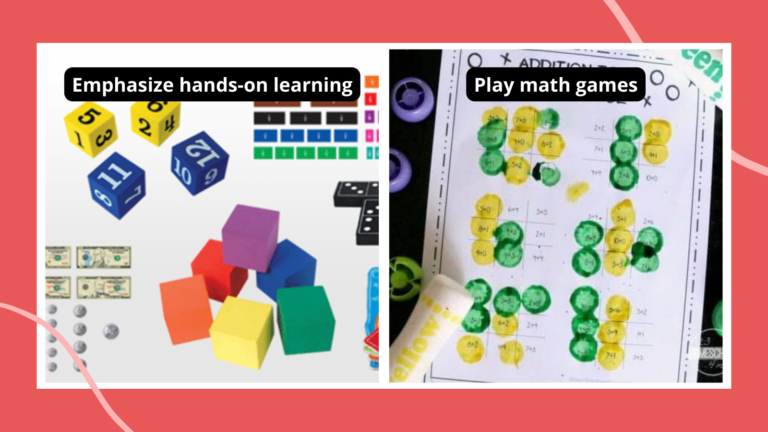
27 Essential Math Strategies for Teaching Students of All Ages
Even veteran teachers need to read these. Continue Reading
Copyright © 2024. All rights reserved. 5335 Gate Parkway, Jacksonville, FL 32256

IMAGES
VIDEO
COMMENTS
• Real-world math problems are valuable for students, showing how math is used in daily life and motivating learning. • This article explains what a real-world math problem is (and what doesn't qualify) and provides 32 authentic examples.
One of the most common questions I get as a high school math teacher is “where exactly will I use algebra in the real world?” Fortunately, there are plenty of examples of algebra in everyday life! Many students find it helpful to know just where they can apply math in their everyday life.
Whilst algebra has many applications in daily life, here are 7 examples of algebra in everyday life including how equations can help us to solve problems.
Unlocking the practicality of algebra in real life: Explaining 10 examples of its applications in various everyday scenarios.
From budgeting their allowance to measuring ingredients for a recipe, and from calculating distances for a road trip to determining the best deals at the grocery store, these are examples of real-life math problems that I incorporate into my lessons.
But the underlying skills they develop in math class—like taking risks, thinking logically and solving problems—will last a lifetime and help them solve work-related and real-world problems. Here are 26 images and accompanying comebacks to share with your students to get them thinking about all the different and unexpected ways they might ...